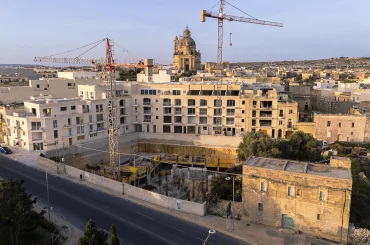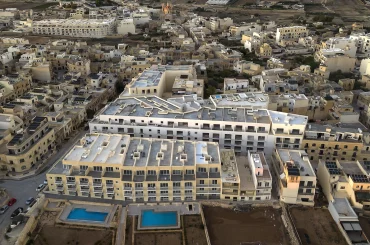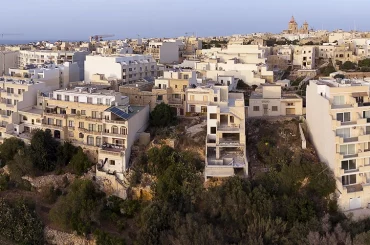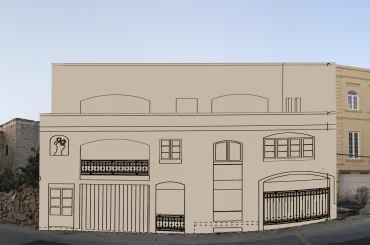In a meeting attended by dozens of objectors, the planning board suspended the development application for a block of 51 flats in Nadur to consult with its “legal office” due to contestations over land ownership.
Also in attendance were the two young women who made a video that went viral on social media yesterday, Corrine Zahra and Chelsea Muscat. Both of them spoke during the meeting.
Zahra’s intervention was particularly passionate, saying that she grew in New York and she knew large buildings, but that these blocks of flats do not belong to Gozo. She said she was speaking “with tears in my eyes.”
The proposed development on the fringes of the development zone – a long bulky building perched on the edge of a valley that would dominate the skyline from miles around – garnered around 1,500 objections, one of the largest number of objections of any development project in Gozo.

It has generated additional controversy because the land on which it is situated was originally put in a medieval foundation, the Beneficcju ta Sant Antonio delli Navarra, set up in 1675 to raise money for pious deeds. The foundation was created for descendants of the foundress, Cosmana Navarra, who vested in the archbishop the power of veto over land transfers.
But in 2017 Archbishop Charles Scicluna renounced that power of veto, and the rector he appointed – the lawyer Patrick Valentino – transferred the land via emphyteutical lease to a company called Carravan Company Limited in 2018. Carravan is owned by the lawyer Carmelo Galea, six Stagno Navarra siblings who claim to be descended from Comana, and a company of the retired magistrate Dennis Montebello and his two daughters, including Rachel, appointed magistrate in 2018. Valentino is Rachel’s partner, with whom he lives.
The applicant, Victor Hili of Titan Development Ltd, has a preliminary agreement with Carravan.
But four separate individuals wrote to the Planning Authority to claim they own parts of the land.
Four NGOs – Din L-Art Helwa Ghawdex, Ghawdix, Moviment Graffitti, and Flimkien Ghal Ambjent Ahjar – then last month filed a judicial protest calling on the Planning Authority to dismiss the application due to the contentious ownership. They latched on to the law, and a judgement of the Court of Appeal, and argued that the authority has to “certify” to a level of “prima facie” that the applicant is the owner as defined in law, or has the consent of the owner.
In this case, the applicant, Hili, declared in the application form: “I am not an owner the entire site, but I am authorized to carry out such proposed development through an agreement with the owner.”
The NGOs argued that since the applicant does not appear to have the consent of those third parties who are contending to be owners of parts of the land, and in keeping with the court judgement (jurisprudence), the level of certification required by law has not been fulfilled. They said that this means that the authority has to dismiss the case.
In today’s hearing, other speakers also raised pertinent issues. Claude Calleja, an architect, pointed out that several entities that have to be consulted – particularly the Environment and Resources Authority, and the Superintendence of Cultural Heritage – were still awaiting further information so that they could give their final position. He questioned why the Planning Authority had not carried out consultation with these entities to its conclusion.
Nadur’s mayor – as well as one of the residents – spoke of sewage overflow in the area that is ending up in San Blas Bay, implying that increasing the density of the habitations would exacerbate the problem.
The mayor, Edward Said, also said that these large blocks of flats jar with the character of Gozitan towns, and that studies to guide the planning process have not been sufficient in this case.
Eventually, the chairperson “suspended” the hearing to refer the case to the authority’s “legal office”.




